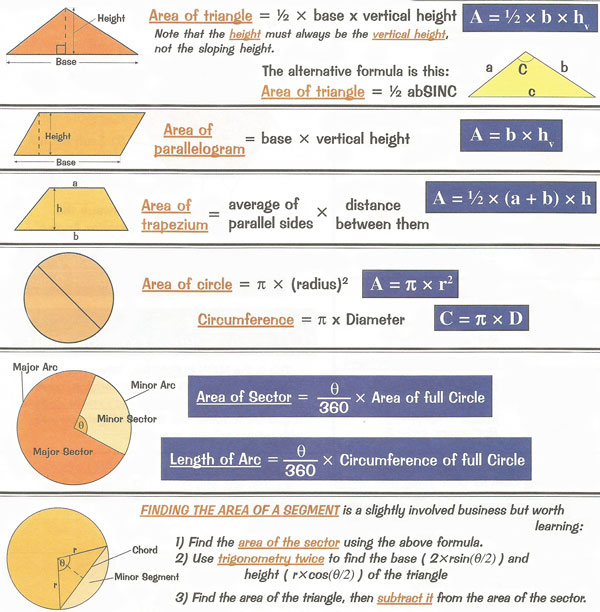area

How to calculate the area of some familiar shapes.
Area is a measure of surface extension in two-dimensional space. 'Area' is the Latin word for a vacant piece of level ground and still carries this more everyday meaning. The French shortened form are denotes a square of land with a side length of 10 meters, i.e., an area of 100 square meters. A hectare is a hundred are.
Area is a measure of the amount of an enclosed surface in terms of the number of squares with sides of unit length, or fractions of those squares, that could be fitted exactly into it. The area of an enclosed region on a curved surface (which can be determined by integral calculus is given by the area it would cover if spread out on a plane surface.
Units of area
Hectare
The hectare is a widely used metric unit of area, equal to 10,000 square meters or 100 are. One hectare equals 2.471 acres.
Acre
The acre is an old unit of area, equal to 160 square rods, 4,840 square yards, 43,560 square feet, or 4046.856 square meters. Ager in Latin, agros in Greek, ajras in Sanskrit, and acker in German all have the same meaning, namely, 'a cultivated field'. Most nations have, or had, some measure corresponding roughly with the area of land that could be plowed by a person in a day.
In England, the chain with which land was measured is 22 yards long (also the length of a cricket pitch). A square chain contains 22 × 2, or 484 square yards; so that 10 square chains make an acre. The acre is divided into 4 roods, a rood into 40 perches and a perch contains 20¼ square yards.
Before the fixing of the statute acre during the reign of George IV the acre varied in different parts of the country, from 2.115 statute acres in Cheshire to 0.477 in Leicestershire. The old Scottish acre was larger than the English, the Irish larger than the Scottish; 23 Scottish acres = 29 imperial acres; 30¼ Irish acres = 49 imperial.


